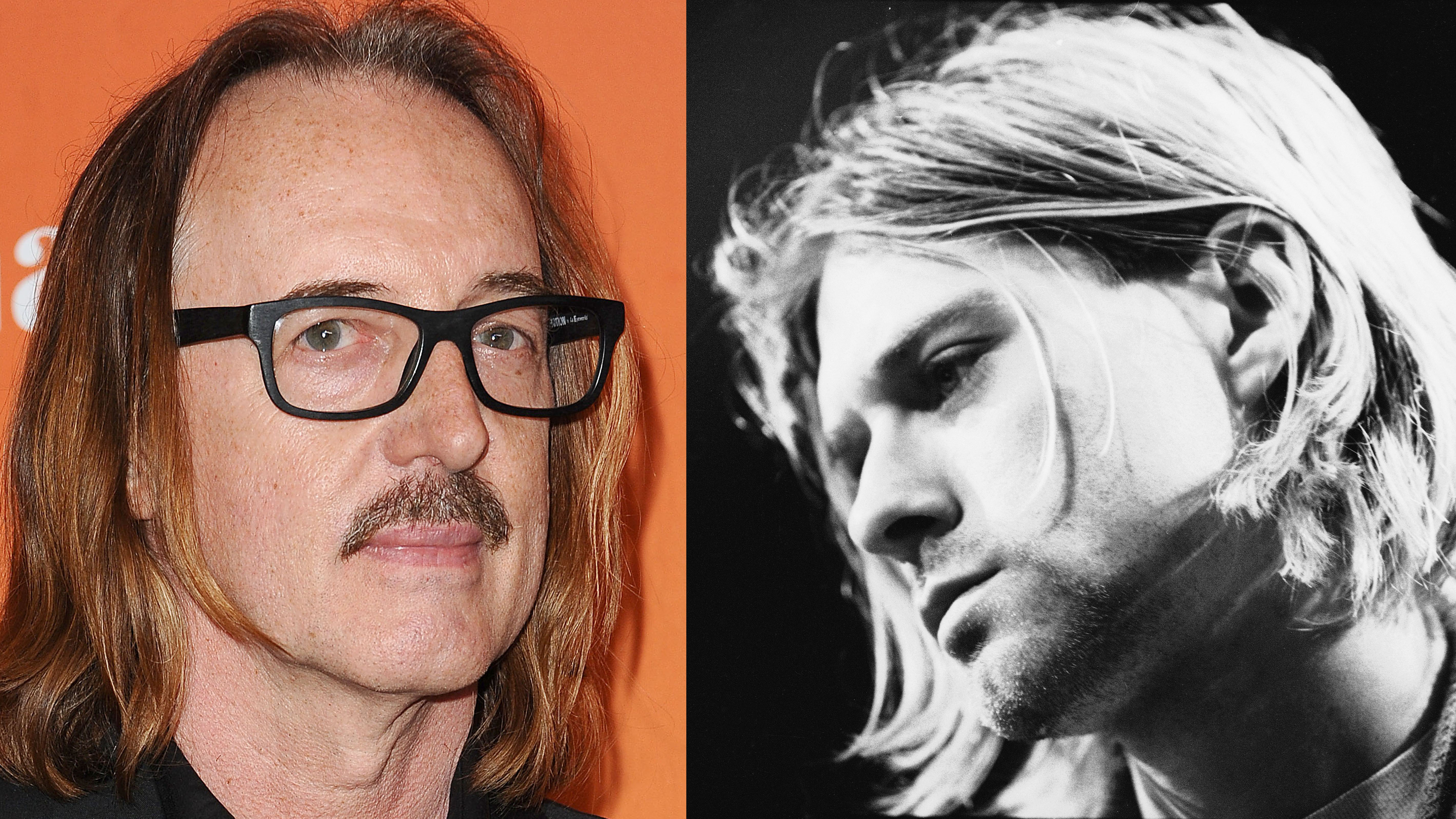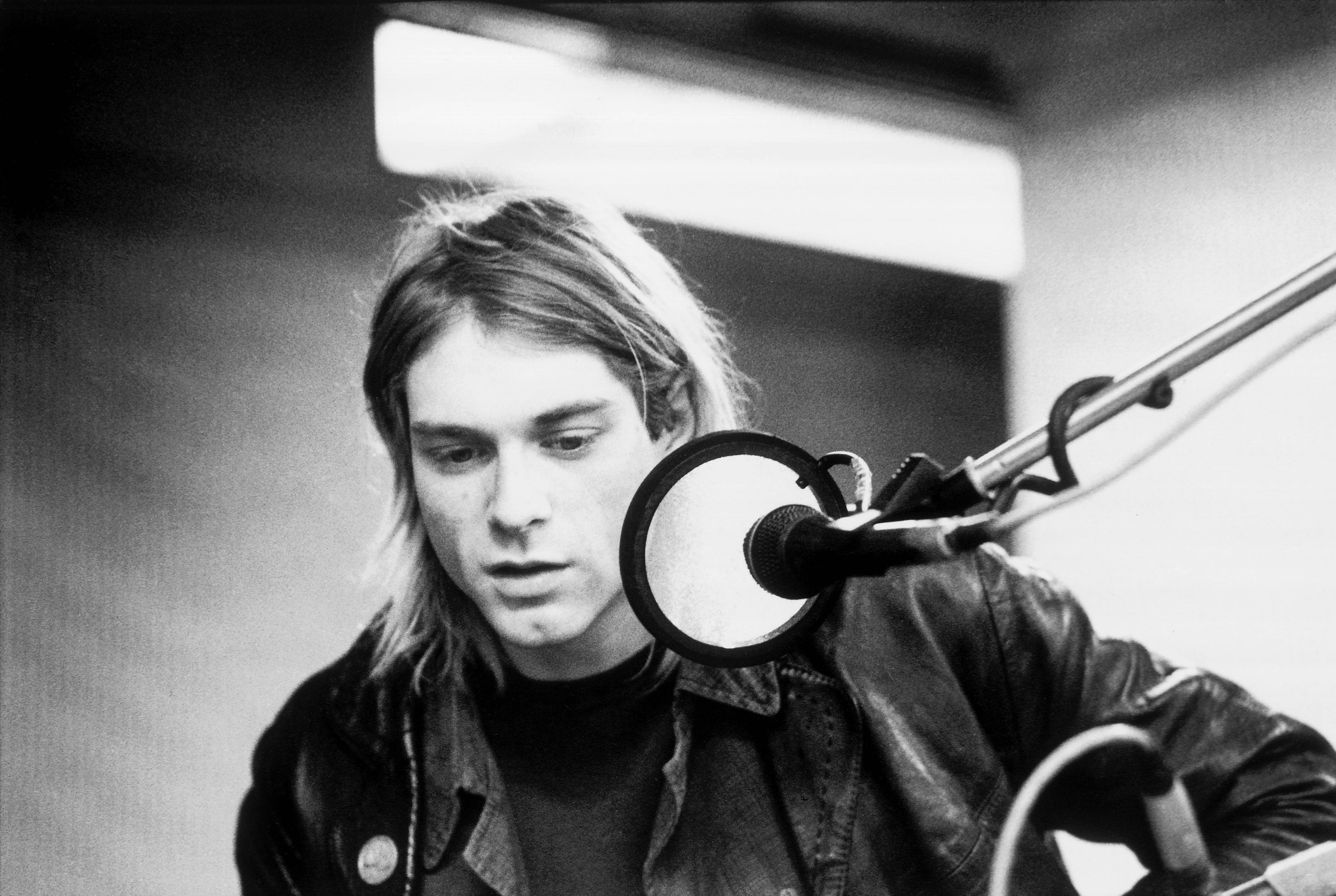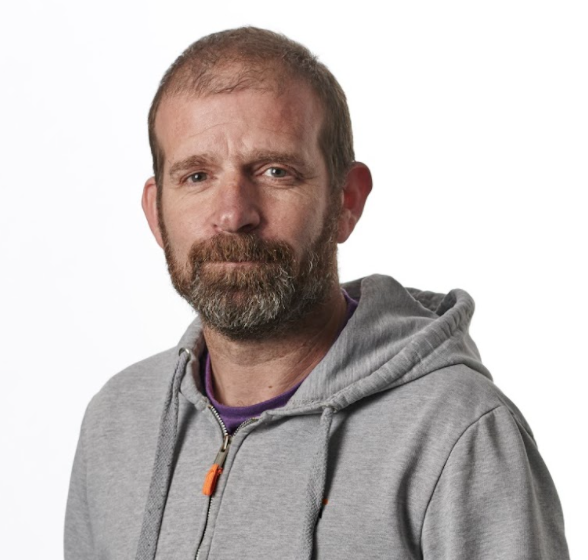Butch Vig on Cobain and the making of Teen Spirit: "As much as he admired Lennon's aesthetic, he really admired McCartney's melodic sensibility"
Super-producer looks back on Nirvana's seminal Nevermind recording sessions

Garbage drummer, producer and all-around grunge Godhead Butch Vig has been looking back at the sessions he ran with Nirvana for Nevermind, in a fascinating interview with consequence.net, and revealed how he convinced a sceptical Kurt Cobain to embrace overdubs.
I discovered he was a huge Beatles fan
Butch Vig
Starting at the beginning, and looking back at his first exposure to Nirvana via debut LP Bleach, Vig recalls "I was kind of unimpressed. I thought their record was kind of one-dimensional, but there was one song on there, About a Girl, which to me was a brilliant pop song and sounded like Lennon-McCartney-style songwriting."
That one song was enough to instigate his first demo sessions with the band at Vigs' Smart Studios in Wisconsin, recording early versions of some of the songs that would feature on Nevermind: "They hadn't written Teen Spirit. I knew that Kurt's songwriting had progressed a lot because of the songs that we recorded for those Smart sessions. In Bloom was one of them, which is just a fantastic song and a great melody over a chord structure. Stay Away was on there. I think it might have been called Pay to Play [below].
"I knew that he (Cobain) was trying to grow as a songwriter and it was during those early Smart sessions... I discovered he was a huge Beatles fan, and as much as he admired John Lennon's aesthetic, he really admired Paul McCartney's melodic songwriting and his melodic sensibility. So I filed that away as a reference point that I would use later on when we recorded Nevermind."
Vig takes us back to the genesis of Nevermind, when Nirvana selected him for producer duties as “We don’t like any of those other bigwig producers.”
Yeah, it sounded like shit. But even though is a wall of fuzzy distortion, I could hear the song
"A couple of days later a cassette showed up. So I put it in my cassette player in the car... It was Kurt, and he said "Hey, Butch, we've got a new drummer, his name is Dave Grohl. He's the best drummer in the world."
"And they kicked into Teen Spirit... and as soon as they kicked in, it was so distorted because they recorded on those boomboxes with the built-in microphones.
Get the MusicRadar Newsletter
Want all the hottest music and gear news, reviews, deals, features and more, direct to your inbox? Sign up here.
"Yeah, it sounded like shit. But even though it's a wall of fuzzy distortion, I could hear the song, you know, I could hear the chord progression. I could hear the 'hello, hello' part.
"And I could tell even though the recording was horrible that they were really, really tight."
When the band did hit the studio, they were there to work: "It wasn't a party, they came in and meant business.
It wasn't a party, they came in and meant business
"I wanted to make sure every time we recorded something, everything was set up... and then just basically have them go for performance.
"So the first day... I walked into this big room... said, 'Okay, let's do it'. They play me a song and they kicked into Teen Spirit. And it blew my mind how good it was... it was so incredibly powerful."
Delving into the full-blown Nevermind sessions at Sound City in LA, and in particular, Cobain's initial reluctance to embrace studio 'trickery', Vig says, "I would go 'let's go overdub that with a separate sound'. And initially, he was totally up for that. But then as soon as you started doing it, he would get a little mad - 'I don't want to do that again'. Really, really, really impatient.
"But I kept saying, 'You know what, remember we're trying to make this sound larger than life, man, let's go for it'. And then the first track we got to when I want him to overdub extra vocals he just said "I really don't feel like I should do that just feels fake."
"And I kept saying the Beatles double-tracked all their vocals. Listen to John Lennon. Listen to Paul McCartney, all the vocals are double-tracked. And he sat there silent for about five seconds, and then he went 'Okay.'

"He was wary of that because I think now that he had signed to Geffen he wanted to retain his punk authenticity... I mean, the recording is really simple. It's basically them playing the song, with some some overdubs and some harmonies and vocals and I really concentrated more on the performance and the sound of everything being recorded.
"And that's really the sound of Nevermind"
On the challenges of capturing Teen Spirit itself, Vig says "Part of it was because he sang so hard, his voice would get blown out after three or four takes. I kinda had a system down at that point for doing vocals - the type of compression I use, and EQ, and I use the microphone I use, so I knew once I got it set for him, anytime you want to sing, I was set.
"I just had to be bulletproof. So anytime he was ready to go, I was ready to record. We would finish the song and then once I thought the rhythm track was great we would go back and just start doing some of the overdubs and build the song quickly."
For the full interview, and for much more, like how Nirvana bootlegged themselves, the time Billy Corgan and a slew of Grunge royalty first heard those Nevermind bootlegs at a barbecue, and how Teen Spirit blew up from MTV rotation to global phenomenon, head over to consequence.net now.

I'm lucky enough to be MusicRadar's Editor-in-chief while being, by some considerable distance, the least proficient musician on the editorial team. An undeniably ropey but occasionally enthusiastic drummer, I've worked on the world's greatest music making website in one capacity or another since its launch in 2007. I hope you enjoy the site - we do.
“I’m beyond excited to introduce the next evolution of the MT15”: PRS announces refresh of tube amp lineup with the all-new Archon Classic and a high-gain power-up for the Mark Tremonti lunchbox head
“These guitars travel around the world and they need to be road ready”: Jackson gives Misha Mansoor’s Juggernaut a new lick of paint, an ebony fingerboard and upgrades to stainless steel frets in signature model refresh



![PRS Archon Classic and Mark Tremonti MT 15 v2: the newly redesigned tube amps offer a host of new features and tones, with the Alter Bridge guitarist's new lunchbox head [right] featuring the Overdrive channel from his MT 100 head, and there's a half-power switch, too.](https://cdn.mos.cms.futurecdn.net/FD37q5pRLCQDhCpT8y94Zi.jpg)





